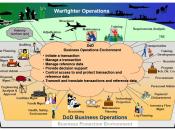1 Executive Summary
Virtual Vineyards have used a broad range of Information Technology (IT) initiatives to realize electronic commerce strategies in the digital age.
Implementation of these initiatives can bring about significant changes of business processes or even industry structures, as early examples have demonstrated. Combining a knowledge of wine and high technology, the company's founders took their business online with a shopping-cart model that lets customers see what's actually in stock when they place an order as well as building a sense of community among suppliers, end users and the site's managers.
The advent of the Internet and electronic commerce (e-commerce) provide interesting new choices to industries and businesses, and the ubiquitous digital space provided a fertile economy of ideas, Virtual Vineyards being one of them.
In the nascent days of e-commerce, emerging technologies have been utilized to automate business transactions, to facilitate communication between business partners, to disseminate information to a global audience, or to set up electronic marketplaces and virtual organizations (Turban et al.
1999).
Electronic commerce systems that Virtual Vineyards employed was significant value as a lever for new customer management strategies, mainly because they directly connect buyers and sellers; supported fully digital information exchange between them; suppressed time and place limits; supported interactivity and therefore could dynamically adapt to customer behaviour, and could be updated in real-time, therefore always up-to-date.
Virtual Vineyards was a result of market forces that existed at the time of its implementation.
2 Virtual Vineyards Business Model
Virtual Vineyards Business Model according to Porters Strategy Model could be acknowledged as pursuing a Niche Strategy by focusing the business on a particular segment of the market then pursuing a differentiation strategy. (Aaker D, 2001) Differentiation strategy requires constant innovation and leadership on the benefits that matter most to the customer (Aaker D,



Context?
1. virtualvin.com no longer exists
2. Much of the research above relies on sources from the mid 1990s
3. eCommerce is no longer new, therefore this statement: "The advent of the Internet and electronic commerce (e-commerce) provide interesting new choices to industries and businesses. . ." is ridiculous.
2 out of 2 people found this comment useful.